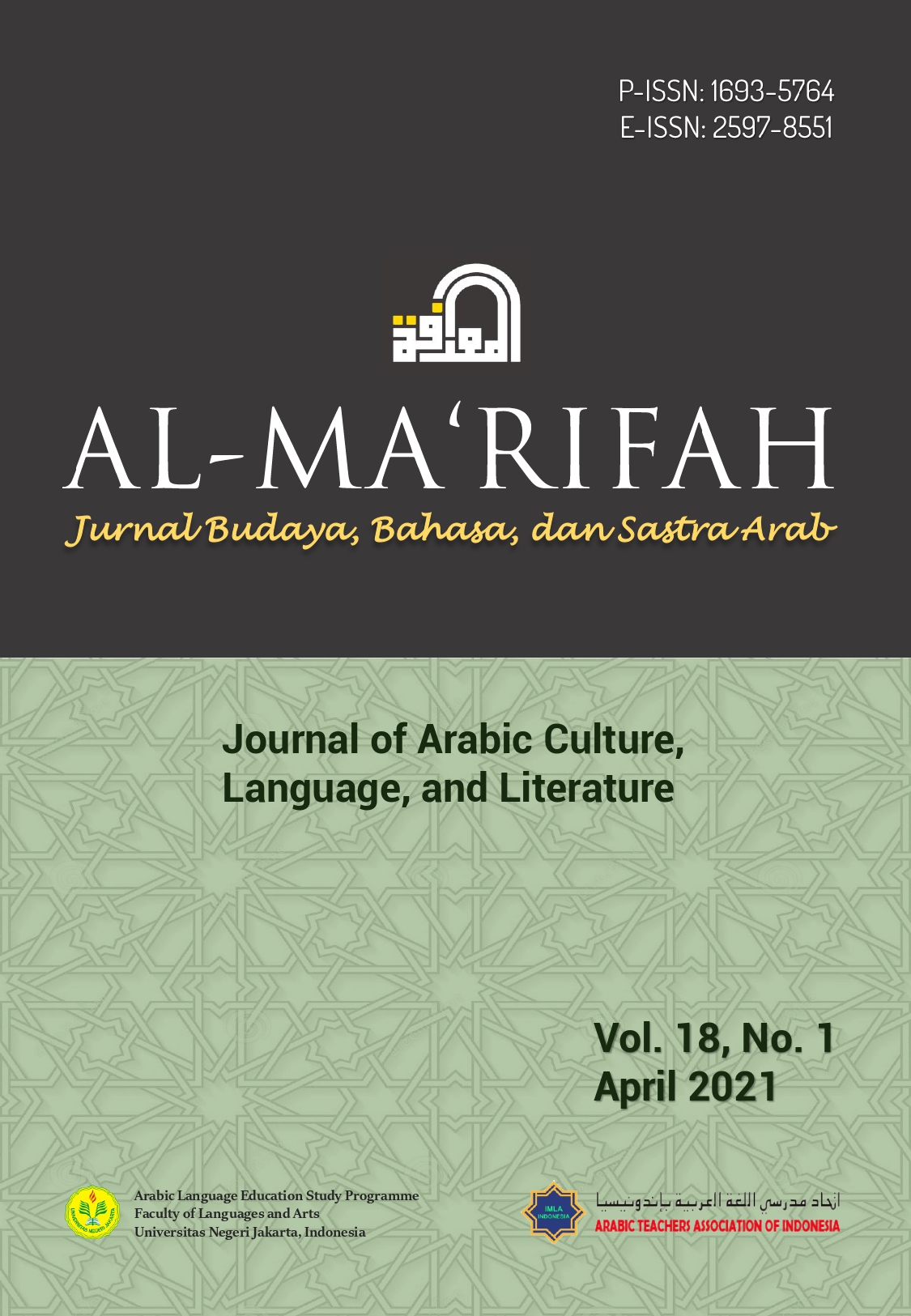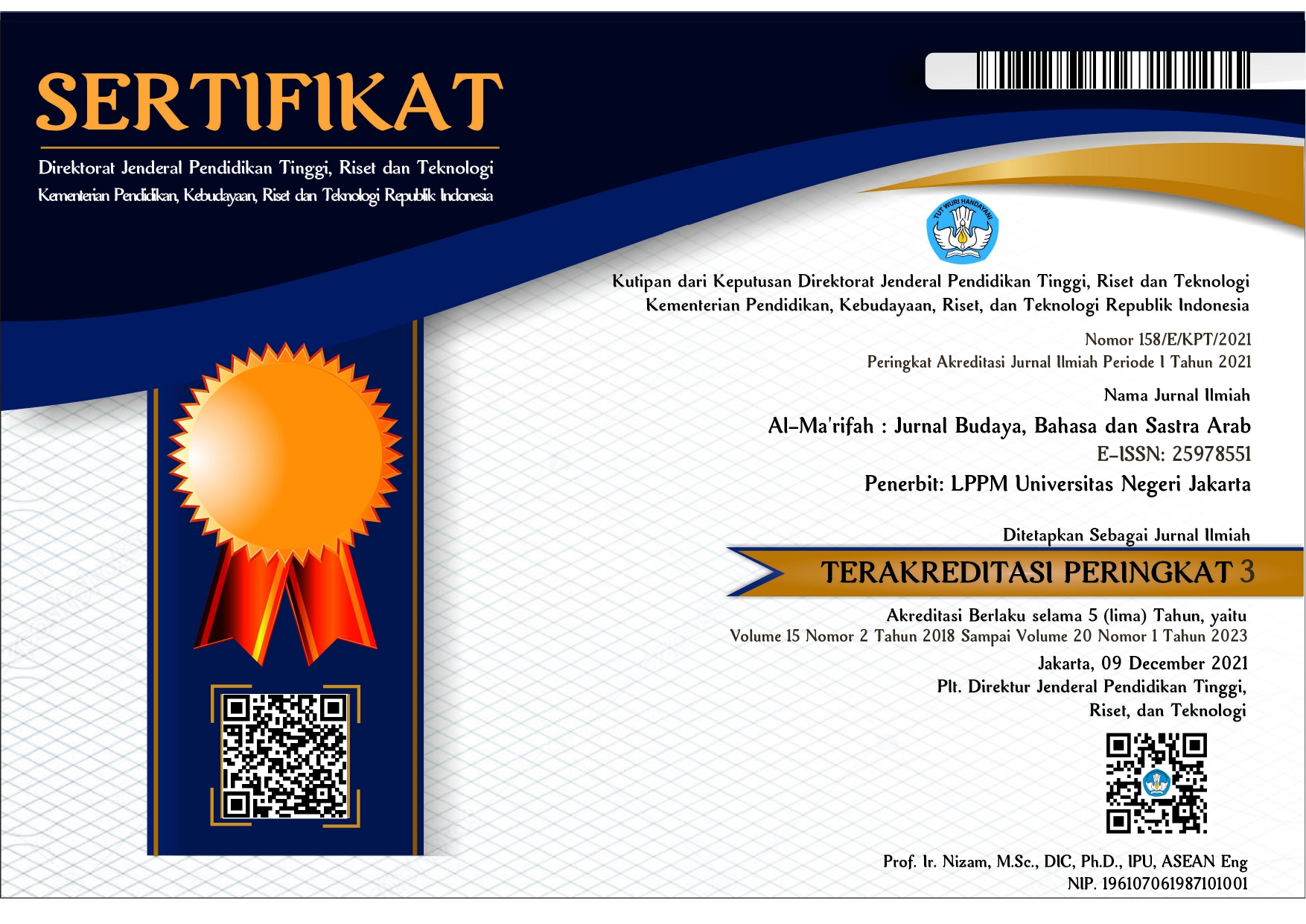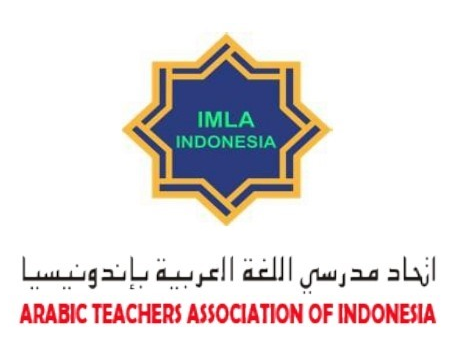Pembinaan Kompetensi Mengajar Bahasa Arab Berbasis European Profiling Grid
Abstract
This study aims to compile a syllabus of the European Profiling Grid (EPG) based teaching competency development course to improve the teaching competence of students to become Arabic teachers with character and competitiveness. The method used in this study is a research and development approach by Richey and Klein’s model with the steps of planning, production, and evaluation. This study identified that some of the EPG aspects had been contained in several other subjects, such as Planning of Arabic Learning, Methodology of Arabic Learning, and Learning Media Arabic. However, there are still several aspects of the EPG that have not yet become a concern in several courses, such as intercultural competence. Thus, several aspects of the EPG such as intercultural competence, professional behavior, administration need to be integrated as a syllabus model for the EPG-based Arabic teaching competence development. The EPG-based teaching competency development syllabus needs to be accompanied by appropriate teaching materials and research instruments. Therefore, research on the development of the next model needs to be done so that the development of teaching competency syllabus based on the EPG can be applied in learning.
References
Andriani, D. E. (2010). Mengembangkan profesionalitas guru abad 21 melalui program pembimbingan yang efektif. Jurnal Manajemen Pendidikan, 6(2), 78–92.
Bergil, A. S., & Sarıçoban, A. (2016). Milestone in English language teacher education: How to use European Profiling Grid in the assessment of prospective EFL teachers’ qualifications. Journal of Language and Linguistic Studies, 12(2), 206–220. Retrieved from https://dergipark.org.tr/en/pub/jlls/issue/36115/405551
Daharti, R., Susilowati, I., & Sutanto, H. A. (2013). Strategi peningkatan kompetensi guru dengan pendekatan analysis hierarchy process. JEJAK: Jurnal Ekonomi dan Kebijakan, 6(1), 80–92. doi:10.15294/jejak.v6i1.3750
Eaquals. (2011). The European Profiling Grid (EPG). Retrieved from https://www.eaquals.org/wp-content/uploads/The_EPG_-_PDF_publication_final.pdf
Eldin, A. A. T. S. (2015). Teaching culture in the classroom to Arabic language students. International Education Studies, 8(2), 113–120. Retrieved from https://eric.ed.gov/?id=EJ1060847
Erdoğan, V. (2019). Integrating 4C skills of 21st century into 4 language skills in EFL classes. International Journal of Education and Research, 7(11), 113–124. Retrieved from https://www.ijern.com/November-2019.php
Hannase, M., & Arifah, F. (2020). Penanaman nilai-nilai multikulturalisme dalam kurikulum pendidikan Islam: Sebuah upaya kontra narasi radikalisme. Rausyan Fikr: Jurnal Studi Ilmu Ushuluddin dan Filsafat, 15(2), 219–244. doi:10.24239/rsy.v15i2.483
Hoque, M. E. (2016). Three domains of learning: Cognitive, affective, and psychomotor. The Journal of EFL Education and Research, 2(2), 45–52.
Helmiati. (2013). Micro teaching melatih keterampilan dasar mengajar. Yogyakarta: Aswaja Pressindo.
Muradi, A. (2013). Tujuan pembelajaran bahasa asing (Arab) di Indonesia. Jurnal Al-Maqayis, 1(1), 140–149. doi:10.18592/jams.v1i1.182
Rossner, R. (2017). Language teaching competences. London: Oxford University Press.
Sugiyono. (2019). Metode penelitian kuantitatif, kualitatif dan R&D. Jakarta: Alfabeta.
Trihardini, A., Wikarti, A. R., & Andriani, S. (2019). Pemahaman lintas budaya bagi pendidik bahasa Mandarin. Jurnal Cakrawala Mandarin, 2(2), 28–36. doi:10.36279/apsmi.v2i2.64
Undang-Undang Nomor 14 Tahun 2005 tentang Guru dan Dosen
Wahab, M. A. (2015). Pembelajaran bahasa Arab di era posmetode. Arabiyat: Jurnal Pendidikan Bahasa Arab dan Kebahasaaraban, 2(1), 59–74. doi:10.15408/a.v2i1.1519
Copyright (c) 2022 Fatwa Arifah

This work is licensed under a Creative Commons Attribution 4.0 International License.











